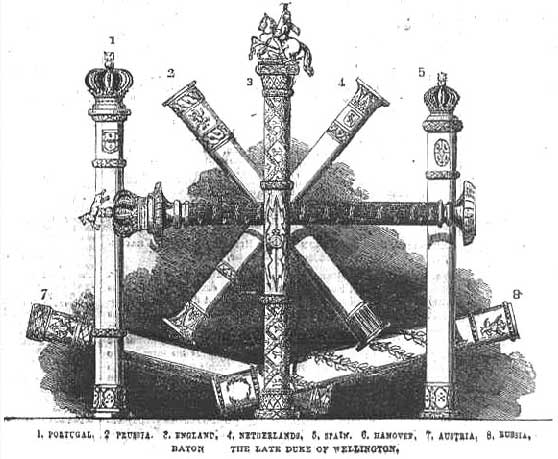|
Batons of The Duke of Wellington
The victor over Napoleon at the Battle of Waterloo was honoured by not only receiving his Field Marshal's Baton from the Regent of the United Kingdom of Great Britain and Ireland, he was showered with Batons from Portugal, Prussia, The Netherlands, Spain, Hanover, Austria, and Russia, eight Batons in all. At the Late Duke's funeral, they were all carried by Officers deputed from the different Kingdoms. Here is some more detail from the Victorian web.
In our Engraving, we represent [opposite] the various batons given to the late Duke of Wellington by the Allied Sovereigns. For more easy reference, we have numbered the batons in the Engraving, and their descriptions we now proceed to give.
Absolutely amazing that the Iron Duke would be so honoured by the crowned heads of Europe, I cannot cite any other Field Marshal who managed to be awarded any Baton other than his own country's one. |

